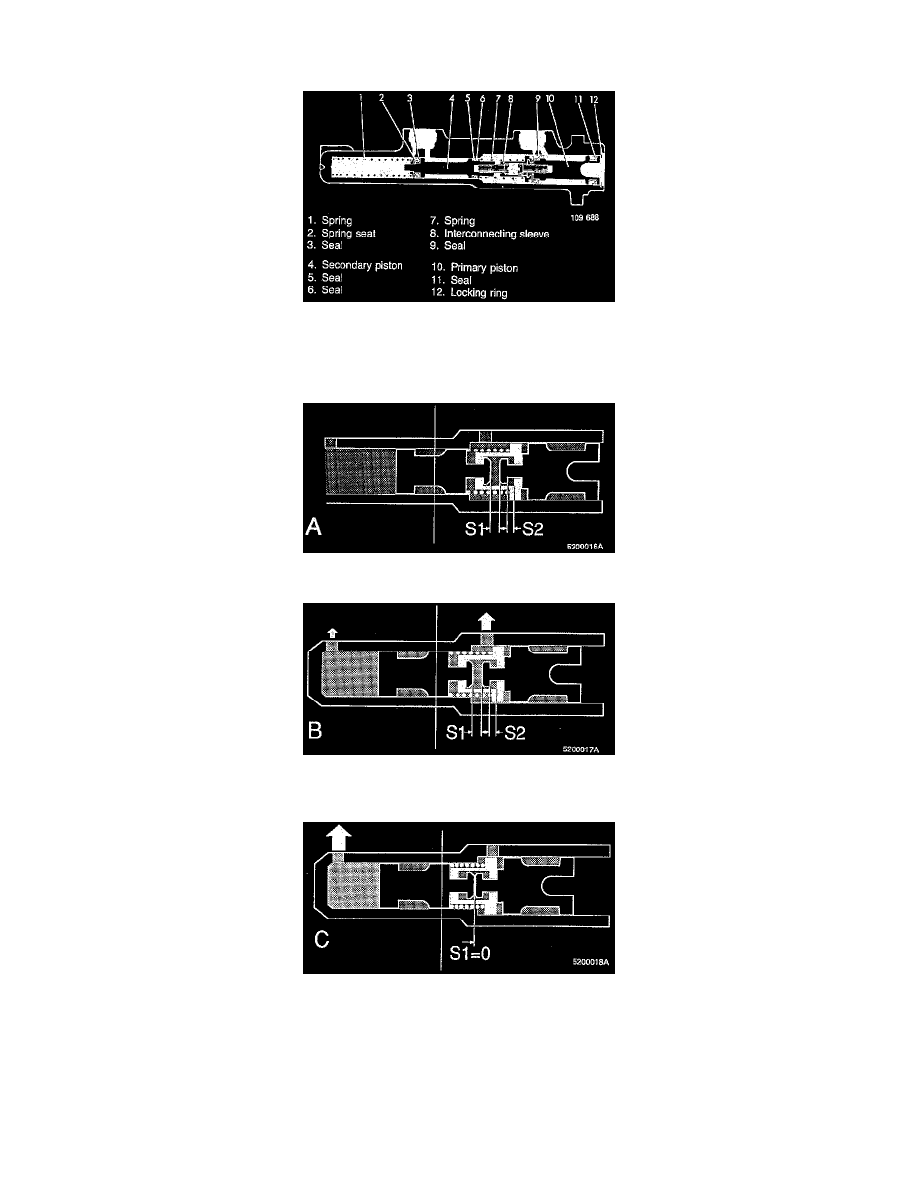940 L4-2.3L SOHC VIN 88 B230F (1992)

Brake Master Cylinder: Description and Operation
MASTER CYLINDER ON CARS WITHOUT ABS TO 1992 INCLUSIVE
The master cylinder is a special tandem type employing two movably interconnected, stepped pistons of different diameters in a stepped cylinder. The
cross-sectional area of the secondary circuit cylinder is only half that of the primary cylinder. The secondary piston (4) and primary piston (10) are
interconnected by a sleeve (8). Thus, in the event of failure of one circuit, the piston stroke is greater than normal (i.e. when both circuits are intact).
The following text and illustrations describe the operation of the master cylinder, showing the pistons in different positions.
Picture A. Pistons in idle position (with brakes off).
Picture B. The pistons assume the positions shown when the brakes are applied and both circuits are in operation. Under these conditions, the pressure
is the same in both circuits.
Picture C. If a leakage occurs in the primary circuit, no pressure will be developed ahead of the primary piston. Initially, the primary piston will be
pushed forward until the interconnecting sleeve meets the secondary piston (S1 = 0). The latter will then be displaced mechanically and pressure will
be developed in the secondary circuit. Since the cross-sectional area of the secondary piston is only half that of the primary piston, the secondary
circuit pressure will be . twice that delivered when both circuits are in operation (for the same pedal pressure).
